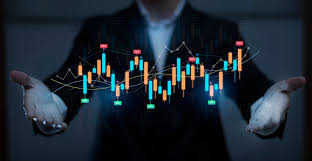
What is Forex Trading?
Forex trading, short for foreign exchange trading, is the process of buying and selling currencies in the foreign exchange market. It is a decentralized marketplace where currencies are traded continuously, making it the largest and most liquid financial market in the world. To engage in Forex trading, traders need to understand the basic principles of the market, how to analyze currency movements, and the strategies employed to maximize profits. For a more in-depth look into Forex trading, visit what is trading forex fx-trading-uz.com.
The Basics of Forex Trading
At its core, Forex trading involves trading currency pairs, which are quoted as one currency relative to another. For example, in the currency pair EUR/USD, the Euro (EUR) is the base currency, and the US Dollar (USD) is the quote currency. Traders speculate on whether the value of the base currency will rise or fall against the quote currency. If a trader believes that the Euro will strengthen against the Dollar, they will buy the EUR/USD pair; if they think the Euro will weaken, they will sell it.
How the Forex Market Works
The Forex market operates 24 hours a day, five days a week, and comprises a network of banks, financial institutions, corporations, and individual traders. The market is divided into different trading sessions based on global financial centers: Sydney, Tokyo, London, and New York. This allows traders to respond to market events at any time, providing numerous opportunities for profit.
Key Participants in the Forex Market
Various entities participate in Forex trading, including:

- Central Banks: These institutions manage their nation's currency, money supply, and interest rates. They intervene in the Forex market to stabilize or increase the value of their currencies.
- Commercial Banks: They facilitate Forex transactions for individuals and corporations, earning profits through spreads and commissions.
- Corporations: Businesses that operate internationally use Forex trading to hedge against currency risk associated with foreign transactions.
- Retail Traders: Individual traders who speculate on currency movements through online trading platforms, seeking to profit from price volatility.
Types of Forex Analysis
Successful Forex trading relies on effective analysis. Traders use three primary types of analysis to guide their trading decisions:
1. Fundamental Analysis
This approach focuses on the economic, social, and political factors that influence currency values. Traders analyze data like interest rates, employment reports, and inflation statistics to forecast future currency movements.
2. Technical Analysis
Technical analysis involves studying historical price charts and patterns to identify trends and make trading decisions. Traders use various tools, such as moving averages, support and resistance levels, and technical indicators to analyze price movements.
3. Sentiment Analysis
This type of analysis gauges the overall mood of market participants. It considers factors such as news events, social media trends, and trader positioning to predict future price movements based on collective sentiment.
Trading Strategies in Forex

Numerous strategies exist for Forex trading, and traders often adapt them to fit their risk tolerance and trading style. Some popular strategies include:
- Day Trading: Traders open and close positions within the same day to capitalize on short-term price movements.
- Swing Trading: This strategy involves holding positions for several days or weeks, aiming to profit from medium-term price fluctuations.
- Scalping: A high-frequency trading strategy focused on making small profits from tiny price changes throughout the day.
- Position Trading: Traders using this strategy take long-term positions based on fundamental analysis, holding trades for weeks or months.
Risks and Challenges of Forex Trading
While Forex trading offers significant potential for profits, it also carries substantial risks. Some of the main risks include:
- Leverage: Forex brokers often offer high leverage, which can amplify both profits and losses. Traders must use leverage cautiously to avoid significant financial damage.
- Market Volatility: Currency prices can fluctuate dramatically due to economic events or geopolitical developments, leading to unexpected losses.
- Emotional Trading: Trading decisions based on emotions rather than analysis can lead to poor outcomes. Discipline and a well-thought-out trading plan are essential.
How to Get Started with Forex Trading
To embark on your Forex trading journey, follow these steps:
- Educate Yourself: Acquire knowledge about the Forex market, trading strategies, and risk management techniques.
- Choose a Reputable Broker: Research and select a licensed Forex broker that offers a user-friendly trading platform and competitive spreads.
- Practice with a Demo Account: Utilize a demo account to practice trading with virtual funds, allowing you to gain experience without risking real money.
- Develop a Trading Plan: Create a comprehensive trading plan that outlines your goals, strategies, risk tolerance, and money management practices.
- Start Trading: Once you feel confident, begin trading with a small amount of real money, and gradually increase your exposure as you gain experience.
Conclusion
Forex trading can be an exciting and potentially lucrative endeavor for those willing to invest time and effort into understanding the market. By grasping the fundamental concepts, developing effective strategies, and managing risks, traders can navigate this complex landscape successfully. Remember that continuous learning and adaptation to market conditions are vital for long-term success in Forex trading.